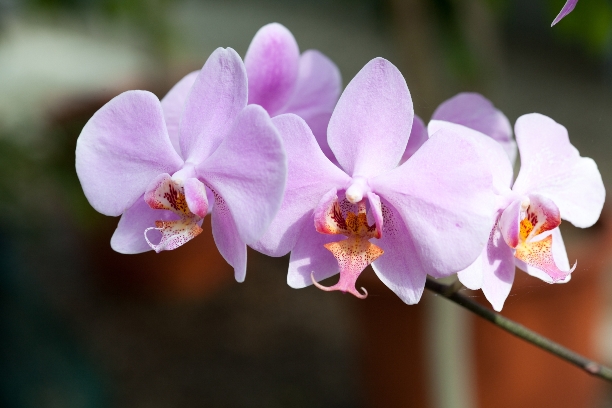
Most people think that caring for orchids is a difficult and time consuming task but this is a serious misconception. The truth is that there are over 25,000 species and more than 100,000 hybrids of orchids. The abundance of orchid types makes it possible for anyone to find an orchid that will fit their lifestyle, resources, and level of skill as a horticulturist.
Although some orchids have special requirements, in most cases orchids require the same amount of care as any other house or garden plant. There is one thing you must always keep in mind when caring for any plant. You need to find out the particular requirements that your flower needs. If you are looking for an orchid that is easy to care for, ask for the Phalaenopsis. This is the popular white or purple orchid that you have probably received as a gift or purchased in a store. For all other orchids, make sure to ask about their specific requirements upon purchase. In addition, adhere to the simple steps below and you should be able to keep your flowers blooming throughout the season.
If taken care of correctly, orchids will bloom for at least three months. There are three main components to proper orchid care: lighting, watering, and pruning.
Lighting
First, you must make sure that your orchid plant is receiving the proper lighting. Your orchid needs to be placed by a window so that it can receive sunlight throughout the day. However, be careful to avoid the midday sun and instead focus on giving your flower morning and evening sunlight. For this reason, you should place your orchid in the eastern side of your home. If this is not an option for you, you can always substitute natural sunlight with fluorescent lights. Be sure to place the lights about a foot above the orchid’s flowers, and limit exposure to normal daylight hours.
Temperature
Second, beware of the temperature and remember to water your orchids properly. Orchids thrive in temperatures above 55 degrees Fahrenheit but no higher than 80 degrees. Orchids exposed to temperatures over 90 degrees will most likely lose their buds or will stop blooming at all. To counteract any overexposure to heat you must water the flower so that it says moist. Always be sure not to over water the roots because this can kill the plant entirely. It is best to either water the plant once every ten weeks, or simply keep the orchid in a water tray constantly. Again, make sure that the roots do not touch the water tray or it will soak up too much water.
Pruning
Lastly, a great tip for maintaining your orchid and keeping it in bloom as long as possible is to fertilize the plant before it blooms. Then, once it has bloomed you will not need to fertilize it again. In conjunction with this, you should also carefully prune the orchid while it is in bloom. You will then make it possible for a second set of flowers develop. With proper adherence to these simple guidelines, you will be able to grow your own beautiful orchid plant that will exhibit a rich and healthy bloom throughout the season.
Related Articles & Free Email Newsletter
Inaccurate Objections to Semi-Hydroponics Culture




Comment here